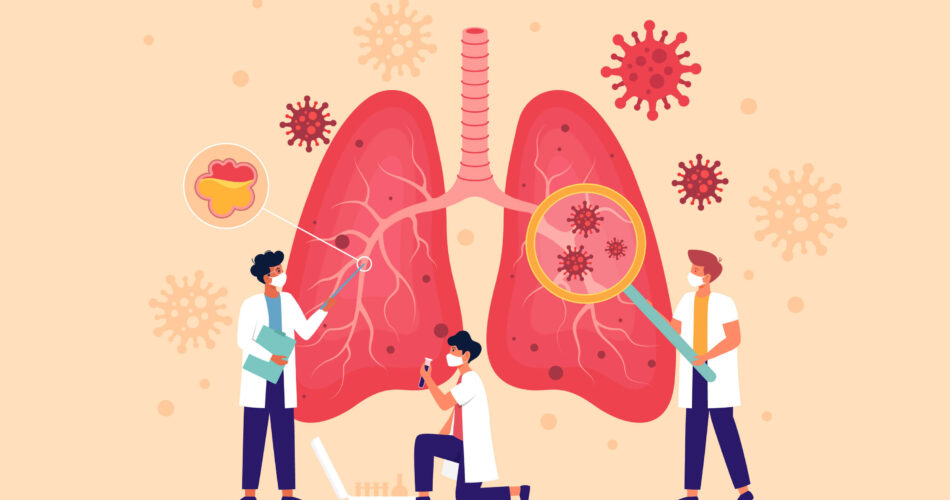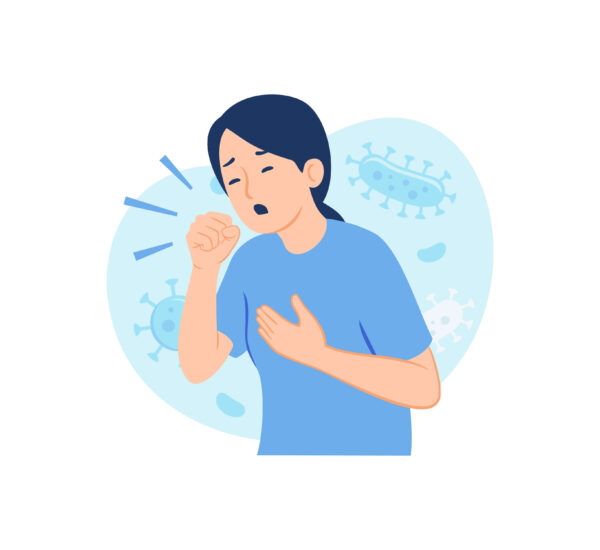Maintaining good respiratory health is difficult, especially if the patient is not aware of the possible risks. With respiratory diseases like bronchial asthma present, people can experience various symptoms, which can progress if not treated immediately.
In this article, we will provide a comprehensive overview of bronchial asthma, including its causes, symptoms, and treatment options. Whether you are seeking basic knowledge or looking for more in-depth information, this article will help you understand this condition and how to manage it effectively. Let’s begin!
What is Bronchial Asthma?

Bronchial asthma, also known as asthma, is a chronic inflammatory disease of the airways. It is characterized by recurring episodes of wheezing, breathlessness, chest tightness, and coughing. These symptoms occur due to the narrowing and swelling of the airways, making it difficult for air to flow in and out of the lungs.
This condition can affect people of all ages, but it often begins in childhood. While asthma may not have a cure, with proper management and treatment, most people with asthma can lead normal, active lives.
Defining Bronchial Asthma
Bronchial asthma is a long term condition where the airways become inflamed and narrow, leading to symptoms such as wheezing and shortness of breath. The inflammation is usually triggered by the immune system’s response to certain substances or irritants.
When a person with asthma comes into contact with these triggers, such as allergens or pollutants, the airways or air passages become irritated and react by narrowing. In short, lung function is compromised when there’s an asthma exacerbation. This is known as an asthma attack or an asthma flare-up.
Recognizing the Symptoms of Bronchial Asthma
Understanding the symptoms of bronchial asthma is essential for timely diagnosis and appropriate treatment. Help manage this condition and improve quality of life through recognizing the warning signs.

Common Symptoms
The most common symptoms of asthma may worsen at night or in the early morning. It is a common occurrence among the patients with bronchial asthma. Here is the list of symptoms to look out for:
Wheezing
Symptom that occurs due to the narrowing of the airways. It is caused by the inflammation and constriction of the bronchial tubes, making it difficult for air to flow freely in and out of the lungs.
Breathlessness
This symptom can range from mild to severe, depending on the individual and the extent of airway obstruction.
Chest tightness
It is often described as a feeling of pressure or discomfort in the chest, which can be distressing and alarming. This sensation is caused by the tightening of the muscles surrounding the airways and can make breathing even more challenging.
Coughing
Most symptoms are often worse at night or in the early morning. It involves the body’s way of clearing the airways of mucus and irritants.
Other symptoms
Individuals with asthma may also experience additional symptoms, such as fatigue, difficulty sleeping, and reduced exercise tolerance. These symptoms can further impact their overall well-being and quality of life.
It is important to note that not all individuals with asthma experience the same symptoms. Some may only have occasional flare-ups, while others may have persistent symptoms that significantly affect their daily lives.
Severity of Symptoms

Learning the symptoms of bronchial asthma doesn’t stop at identifying the symptoms. Patients must be also aware of its level of severity as it can help indicate whether or not it is life-threatening.
Let’s uncover each of the levels including the symptoms associated with them:
Mild
The first level is the mild symptoms, which may only occur occasionally and not significantly impact daily activities. Individuals with mild asthma may experience infrequent wheezing, breathing problems like minimal breathlessness, and occasional coughing.
Moderate
Meanwhile, the moderate symptoms may occur more often and affect daily activities to a certain extent. Individuals with moderate asthma may experience frequent episodes of wheezing, noticeable breathlessness during physical exertion, chest tightness, and a persistent cough.
Severe
Lastly, severe symptoms can be disruptive and even life-threatening. This level of severity may require immediate medical attention and can lead to hospitalization if not treated promptly.
During a severe asthma attack, individuals may experience severe wheezing, extreme breathlessness even at rest, intense chest tightness, and prolonged coughing. These symptoms can be distressing and may require the use of emergency medications, such as bronchodilators and corticosteroids, to alleviate the airway inflammation and restore normal breathing.
Causes of Bronchial Asthma
While the exact cause of bronchial asthma is still not fully understood, several factors are considered to be asthma triggers that contribute to its development. These factors can be categorized into genetic factors, environmental triggers, and lifestyle choices.
Genetic Factors
Asthma tends to run in families, suggesting a genetic predisposition to the condition. If one or both of your parents have asthma, you are more likely to develop it yourself. However, having a genetic predisposition does not guarantee that you will develop asthma, as other factors also play a role in its development.
Environmental Factors
Environmental factors are substances or situations that can cause an asthma flare-up. These triggers vary from person to person, but common ones include allergens such as pollen, house dust mites, pet dander, and mold. Irritants like cigarette smoke, air pollution, strong odors, and certain chemicals can also trigger asthma symptoms.
Weather Condition
Weather conditions can also play a significant role in triggering asthma symptoms. Changes in temperature, humidity levels, high pollen counts, or cold air can exacerbate asthma attacks in some individuals. It is important for people with asthma to be aware of weather forecasts and take necessary precautions during extreme weather conditions to manage their condition effectively.
Smoking
Smoking is a significant risk factor for developing asthma and can also make existing asthma worse. The chemicals in tobacco smoke irritate the airways and increase inflammation, making it harder to control asthma symptoms.
Strenuous Activities
On the other hand, extreme physical activities can also heightened the respiratory status, resulting in wheezing and breathlessness. Patients with existing asthma must avoid this kind of activity as it also worsens the condition.
Respiratory Infection
Meanwhile, having a respiratory infection due to viral infections can eventually progress to asthma. With the airways being compromised due to cold, it worsens the condition and affects the breathing of the patient.
When to Seek Medical Attention

It is important to seek medical attention from a health care provider if you experience any symptoms of asthma or suspect that you may have the condition. A healthcare professional can evaluate your symptoms, conduct diagnostic tests, and recommend appropriate medical treatment like asthma medications and other treatment options.
Early diagnosis and intervention are crucial for effectively managing asthma and minimizing the risk of complications. With proper medical guidance, individuals with asthma can learn to control their symptoms, reduce the frequency of flare-ups, and lead a fulfilling life.
Additionally, if you already have asthma and notice a sudden worsening of symptoms, it is crucial to seek medical help as soon as possible. This could indicate an impending asthma attack and requires immediate intervention.
Remember, asthma is a chronic condition that requires ongoing management and monitoring. By working closely with healthcare professionals and following a personalized treatment plan, individuals with asthma can effectively control their symptoms and live a healthy, active life.
Final Takeaway
Choosing to manage bronchial asthma before it worsens is a wise decision for the patients. Doing so means they understand the included risks of the condition as it can progress to life-threatening severity level.If this complication still persists, setting an immediate prevention step such as online consultation can help. Book a consultation with a pulmonologist to monitor and treat this respiratory condition before it progresses.



